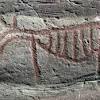Brooks Robinson, Slick-Fielding Orioles Hall of Famer, Dies at 86

Supported by
In his 23-year career, all of it with the Baltimore Orioles, he had 2,848 hits and 268 home runs. But he was best known for his unparalleled defense.
- Share full article
- 21

Brooks Robinson, the Baltimore Orioles Hall of Famer who was perhaps the finest third baseman in baseball history, died on Tuesday at his home in Owings Mills, a suburb of Baltimore. He was 86.
The cause was coronary disease, Diane Hock, his longtime friend and agent, said.
His death was announced by the Orioles in a statement that did not include further information.
In his 23 seasons with the Orioles, from 1955 to 1977, Robinson became known as the Human Vacuum Cleaner for his ability to snare just about anything hit his way.
Charging topped grounders or bunts, backhanding smashes, ranging to his left or his right, he won 16 consecutive Gold Glove awards as the American League’s leading fielder at third base. Only the pitcher Greg Maddux, with 18 Gold Gloves, has exceeded Robinson’s total.
Robinson played on four pennant-winning teams, two of them World Series champions. He was the most valuable player of the 1970 World Series, in which the Orioles beat the Cincinnati Reds in five games, for his spectacular plays and for his hitting: He had a .429 batting average and hit a pair of home runs. (The Orioles also beat the Los Angeles Dodgers in four games in the 1966 Series.)
Robinson had 2,848 hits, 268 home runs and a career batting average of .267. He was the American League’s Most Valuable Player in 1964, when he hit 28 homers, had a league-leading 118 runs batted in and batted .317, all career highs. But he was best known for his fielding.
Robinson was named an All-Star every season from 1960 to 1974. He was elected to the Baseball Hall of Fame in 1983, his first year of eligibility, with almost 92 percent of the votes.
In an interview with the former baseball commissioner Fay Vincent for his 2008 oral history, “We Would Have Played for Nothing,” Robinson recalled that after the 1970 World Series, “all the writers were waiting on me to come to my locker,” but Rex Barney, the Orioles’ broadcaster, said: “Well, don’t worry about him. Just interview his gloves. They’re a lot better, and that’s who’s doing all the work.”
Robinson wasn’t using his World Series glove the next year. It had been transported to the Hall of Fame.
Brooks Calbert Robinson Jr. was born on May 18, 1937, in Little Rock, Ark., where his father, Brooks Sr., was a fireman and also played semipro baseball. His mother, Ethel Mae (Denker) Robinson, worked as a clerk at the Arkansas State treasury department. Brooks was the batboy on his father’s team, and he listened to St. Louis Cardinals games on the radio, growing determined to become a major league player. Tossing tennis balls against the steps of his family home hour after hour and grabbing the caroms, he taught himself to field a baseball coming at him from all sorts of angles.
Signed by the Orioles’ organization out of high school, Robinson started out as a second baseman for their York, Pa., farm team in 1955. But he was soon switched to third base, where his marvelous reactions enabled him to corral hard-hit balls.
Robinson got into a few games with the Orioles in 1955 and 1956. In the spring of 1957, Paul Richards, the team’s manager, thought he found a flaw in the mechanics of Robinson’s backhand plays and asked George Kell, the longtime third baseman who was concluding his major league career with the Orioles, to correct it.
But Kell noted that Robinson had not missed a ball hit to his backhand in six weeks of spring training. “He was already so good that there wasn’t much I could tell him,” Kell recalled in an interview with The Baltimore Sun in 2004.
Robinson played 145 games with the Orioles in 1958 (he hit a disappointing .238) and, after serving six months in the Arkansas National Guard and spending much of the 1959 season in the minor leagues, returned to the Orioles to stay in 1960.
With Robinson at third base and the future Hall of Famer Luis Aparicio and later Mark Belanger, both brilliant fielders, alongside him at shortstop for much of his career, the left side of the Orioles’ infield provided all the support a pitcher could want.
“I always had great hand-eye coordination and was blessed with the instinct to be where the baseball was hit,” Robinson told Danny Peary for his book “We Played the Game” (1994).
“I wasn’t fast and I didn’t have a great arm,” he added, “yet I compensated by quickly getting my feet in position to throw and getting rid of the ball quicker than anyone else.”
Robinson complemented his natural talents with hard work.
He told Fay Vincent how he “worked on the slow hit, the topped balls or bunts.”
“I used to line up about 10 or 12 balls in a row,” he recalled. “You just come in and pick one up and you’d take another step and pick one up and throw it.”
When Robinson retired, he held major league records for most games, putouts, assists and double plays by a third baseman, as well as highest fielding percentage. He was later a television broadcaster for the Orioles.
He met a flight attendant, Constance Butcher, when she was working on a flight chartered by the Orioles, and they quickly fell in love, marrying in 1960. She survives him, as fo their three sons, Brooks David, Chris and Michael; their daughter, Diana Farley; a brother, Gary; 10 grandchildren; and one great-grandson.
When Robinson entered the Hall of Fame, Kell, a fellow Arkansas native, was inducted as well. (Robinson was selected by baseball writers, Kell by the Veterans Committee.)
“Is Brooks the best ever at third? No doubt about it,” Kell told The Sun in 2004.
Sparky Anderson, who managed the Reds in the 1970 World Series, found himself tormented by all those sure hits that Robinson turned into outs.
“I’m beginning to see Brooks in my sleep,” Investor’s Business Daily said Anderson remarked that October. “If I dropped this paper plate, he’d pick it up on one hop and throw me out at first.”
Alex Traub contributed reporting.
- Share full article
- 21


 United States
United States Argentina
Argentina  Australia
Australia  Austria
Austria  Brazil
Brazil  Canada
Canada  Chile
Chile  Czechia
Czechia  France
France  Germany
Germany  Greece
Greece  Italy
Italy  Mexico
Mexico  New Zealand
New Zealand  Nigeria
Nigeria  Norway
Norway  Poland
Poland  Portugal
Portugal  Sweden
Sweden  Switzerland
Switzerland  United Kingdom
United Kingdom 






